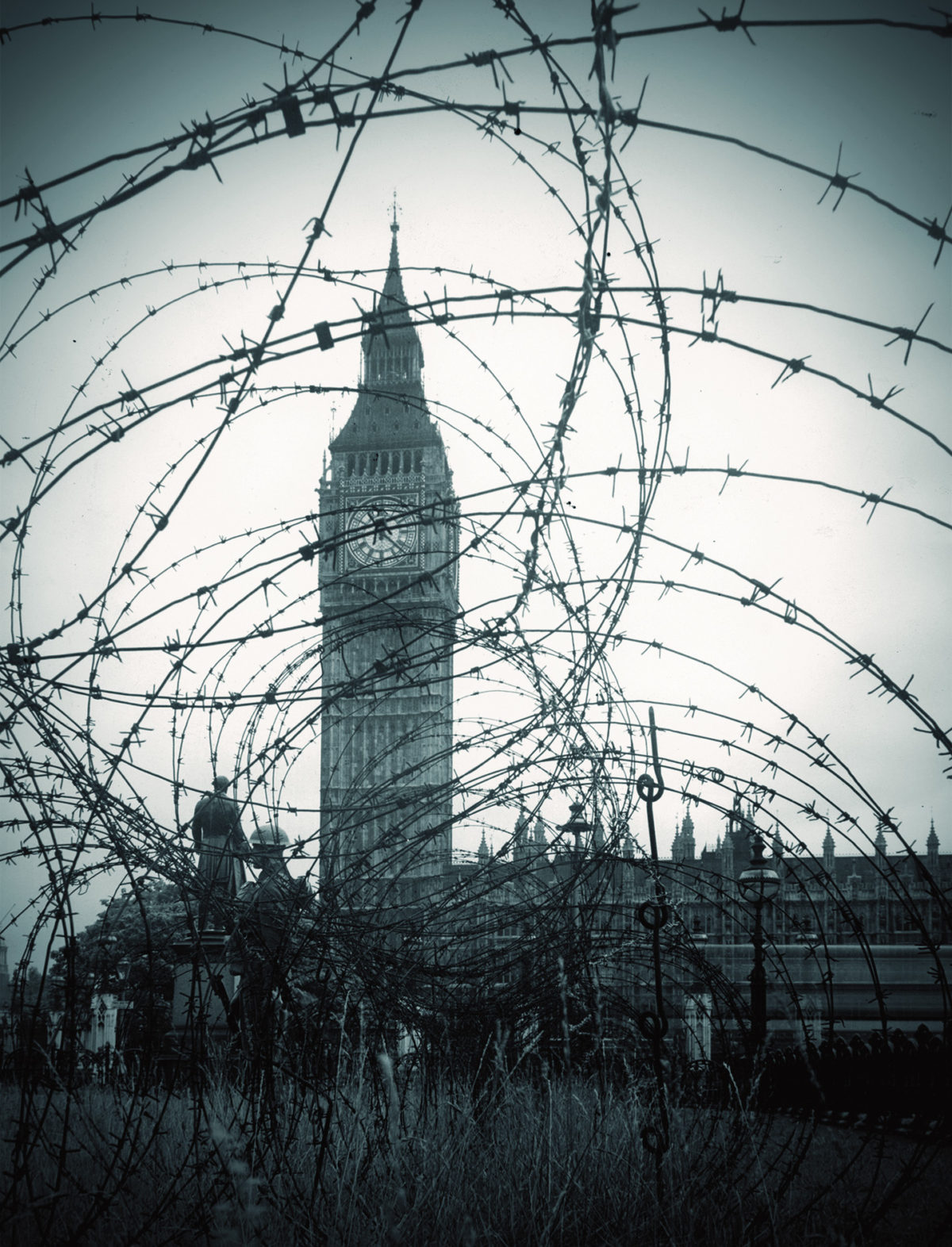In July 1942, a demolition worker named Benjamin Marshall descended into the basement of a bombed-out Baptist chapel in Vauxhall, south London. He set to work with his spade, clearing the debris on the floor, when he noticed a paving slab was loose. Lifting it up, he discovered a mummified body.
Finding a corpse in the church wasn’t a huge shock. More than 100 people had been killed in the fire that had followed the bombing of the building in October 1940, at the height of the Luftwaffe attacks on London known as the Blitz. But Marshall and his colleagues summoned the local police anyway. They, too, initially assumed it was another victim of the Blitz: part of the skull was missing, as were the lower arms and legs. Presumably they had been blown off in the blast.
Nonetheless, the police asked a pathologist, Dr. Keith Simpson, to take a look. He realized that something was wrong. The head appeared to have been intentionally removed from the torso, as were the limbs below the elbows and knees. The amputations were too clean to be the result of a bombing, and marks from a saw were visible on the bones. Looking closer at what remained of the flesh on the skeleton, he concluded he was looking at the body of a woman who had been strangled.
The police had a pretty good idea of who she was: Rachel Dobkin. The previous year, a woman named Polly Dubinski had reported that her sister Rachel had gone missing, and she accused Rachel’s estranged husband, Harry Dobkin, of being involved. The pair, she said, had a bad relationship, and Harry resented his wife’s requests for financial support. At the time, the police had been unable to trace Rachel or pin anything on Harry. But now they noted that Harry had formerly worked as a night watchman for an office next to the very chapel where the body turned up.
Short of money and fed up with his wife’s demands, Dobkin had decided that the Blitz offered an opportunity. With so many people dying violent deaths—40,000 between September 1940 and May 1941, half of them in London—who was going to notice one more corpse? He had killed his wife, removed anything he thought might identify her body, and buried her at the bombed-out chapel near his workplace. That November he was convicted of his wife’s murder, and in January 1943 he was hanged at Wandsworth Prison.
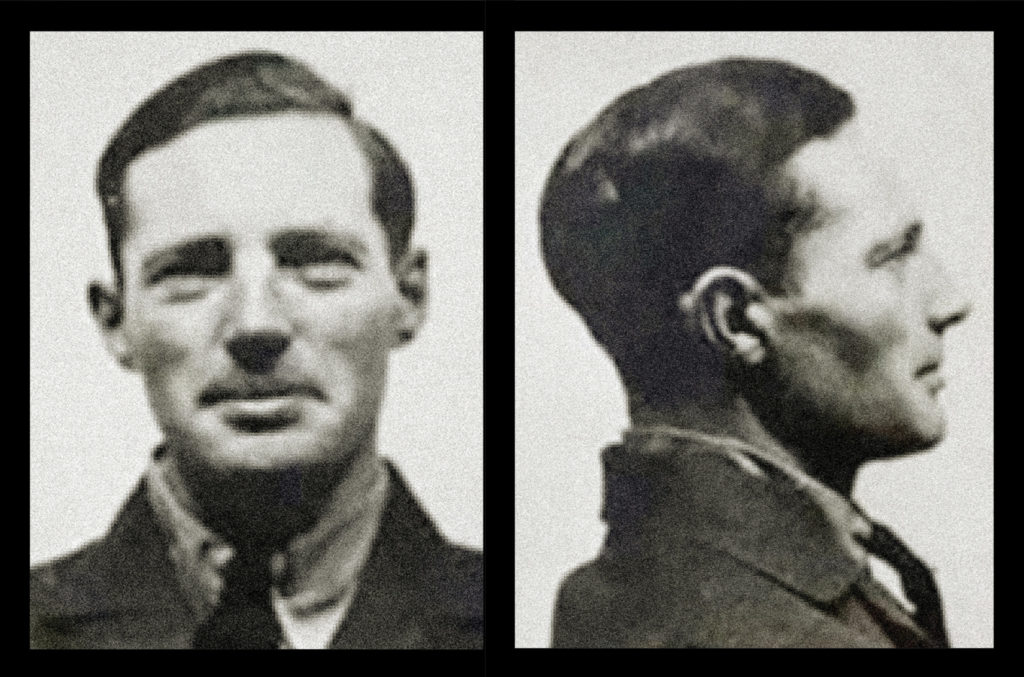
Dobkin’s tale is an extreme example, but he was far from the only Englishman who ventured into criminality during the war. The number of reported crimes in England and Wales rose nearly 60 percent between 1939 and 1945, but with many going unreported and undetected, that is likely to be a vast underestimate. Government propaganda worked to give the impression of a nation that was keeping calm and carrying on, with much talk of “Blitz spirit” and “business as usual” and pictures of plucky Londoners picking their way through the rubble to proceed with their lives in the face of the bombing. But there was a far murkier side to wartime life.
One reason for the surge in crime was that there were simply more crimes to commit. As Britain began participating in total war, the law began intruding into almost every area of life. Things as harmless as speaking your mind, turning a light on, and buying more than a couple of ounces of butter could now turn people into criminals.
During the “invasion panic” of 1940, when it seemed the Germans were on the point of crossing the English Channel, people were prosecuted for spreading “alarm and despondency.” A woman who’d been overheard in a hotel room saying to her boyfriend, “Who cares if Hitler does come, so long as we can have fun like this?” was jailed for a month. Prosecutions like that sparked a backlash. Writing in The Spectator magazine, the novelist Dorothy L. Sayers said they gave “a very faint glimpse of the thing we are fighting against” and that citizens spying on each other “is the thing that Nazi government means, and it is a thing we will not endure.” The English saw themselves as freedom-loving people who didn’t snoop on their neighbors, even if the number of reports going into the police from busybodies suggested there were plenty who did. Prime Minister Winston Churchill signaled that he wanted such prosecutions to stop.
The blackout law was the change that affected everyday life quickest. The authorities were terrified by the prospect of bombing, something that had only had a limited impact on Britain in World War I but now, with the development of larger, longer-range airplanes, threatened to level cities. Fearful that lights on the ground would guide German pilots to their targets, the government ordered streetlights turned off and car headlights largely covered, and decreed that not a single bit of light should show from any building. Police and air raid wardens patrolled the streets, warning the British, “Get that light out!”
It was a huge effort, as householders across Britain covered their windows at dusk each evening with heavy cloth—or simply painted or wallpapered over them—and it had a human cost: with drivers and pedestrians unable to see each other, the number of road deaths doubled in the early months of the war, at a time when German bombers had barely gone near Britain. It also brought many previously law-abiding citizens into contact with the courts. In 1940, 300,000 people were charged with breaking the blackout. The usual penalty was a stiff fine, but in 1943 one persistent offender was sentenced to two months’ hard labor.
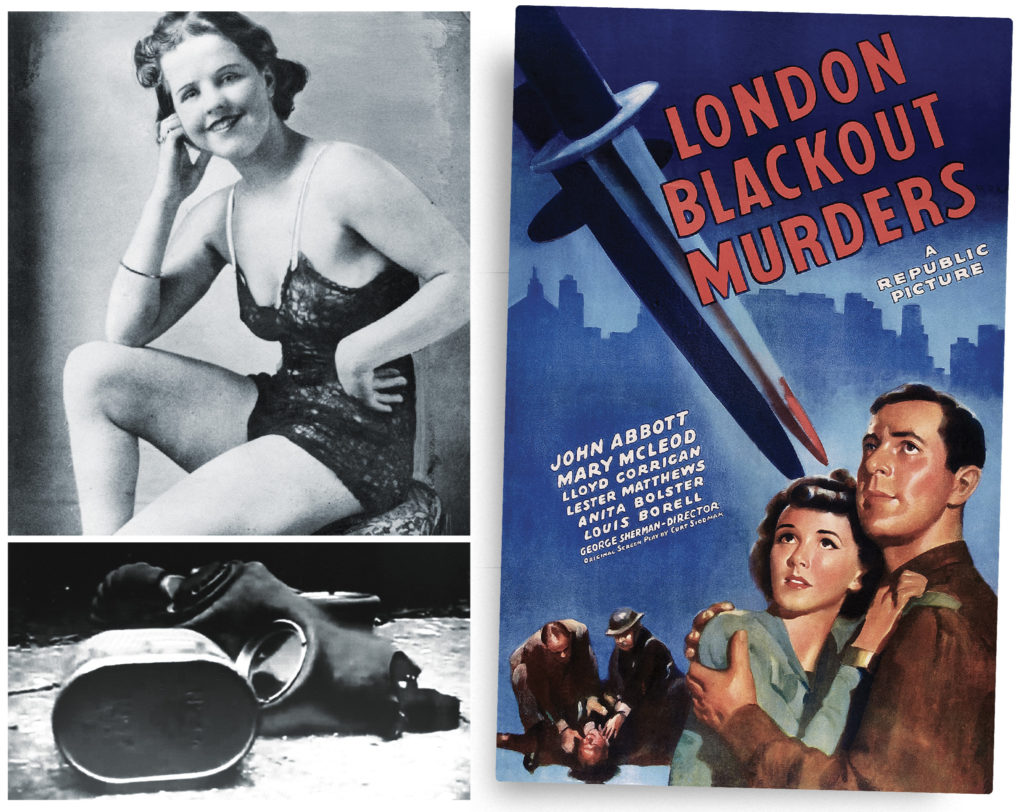
Some breaches of the blackout were frivolous. The British television critic Nancy Banks-Smith recalled that she and a fellow teenager made bras with material cut from their boarding school’s blackout curtains. “The bosom-shaped holes we left, signalling brightly to passing planes, were the occasion for a blistering sermon from the headmistress, Dame Emmeline, about giving comfort and support to the enemy,” Banks-Smith said.
Other violations were deadly serious. In the summer of 1940, the domestic security service, MI5, received word that a group of fascist sympathizers in Leeds, in northern England, were plotting arson attacks to attract German bombers. The men were arrested and sent to an internment camp on the Isle of Man, in the Irish Sea between England and Ireland.
And, of course, the darkness of the blackout provided cover for other crimes. In February 1942, the body of a 41-year-old pharmacist, Evelyn Hamilton, was discovered in an air raid shelter in Marylebone, central London. She had been strangled, apparently on her way home from a late dinner. The next day a 34-year-old prostitute, Evelyn Oatley, was found in her flat in Soho, a mile away. This time the victim had been mutilated. Scotland Yard’s detectives didn’t yet use the expression “serial killer,” but they suspected the murders were the work of the same man, and they feared he would strike again. Police increased patrols of the area and quizzed prostitutes if they had seen anyone unusual.
In an echo of the 19th-century’s infamous Jack, the murderer became known as “The Blackout Ripper.” He killed twice more over the next three days, each time mutilating his victims’ bodies. Another prostitute managed to escape him as he started to strangle her. And then, five nights after the first attack, the police had some luck. An 18-year-old delivery boy was carrying a crate of bottles to a central London pub when he heard a scuffle in a doorway. He went to investigate and a man in military uniform fled the scene, leaving an unconscious woman behind him. She told police an airman had approached her in a pub and walked outside with her. There he tried to grope her and, when she resisted, strangle her. As he fled, the man had dropped his gas mask—a standard piece of equipment that everyone was advised to carry in case the Nazis resorted to chemical warfare. It was marked with a Royal Air Force identity number.
The following morning, the police arrested Gordon Frederick Cummins, a 27-year-old pilot cadet. Though he protested his innocence, the police found valuables stolen from his victims among his possessions, and the woman he had picked up in the pub identified him. He was hanged in June 1942. In an appropriate twist for a man who had made such use of the blackout, he is the only person to have been executed during an air raid.
Not even such horrific stories could dissuade women from prostitution. The imminence of death had led to a surge in demand for their work, and that was met with an equal surge in supply. Although brothels—“disorderly houses” as they were known in British law—were illegal, prostitution itself was not, so there was little the police could do about the large numbers of women who turned out onto London’s streets. These women were dubbed “Piccadilly commandos” or “Piccadilly warriors” because the trade centered on the famous thoroughfare and public space in London’s West End.
Military authorities cared little for the moral questions but were deeply worried about the health impact. At the end of 1942, rates of venereal disease among U.S. troops were 39 per thousand if they were stationed on home soil, and 58 per thousand if they were in Britain.
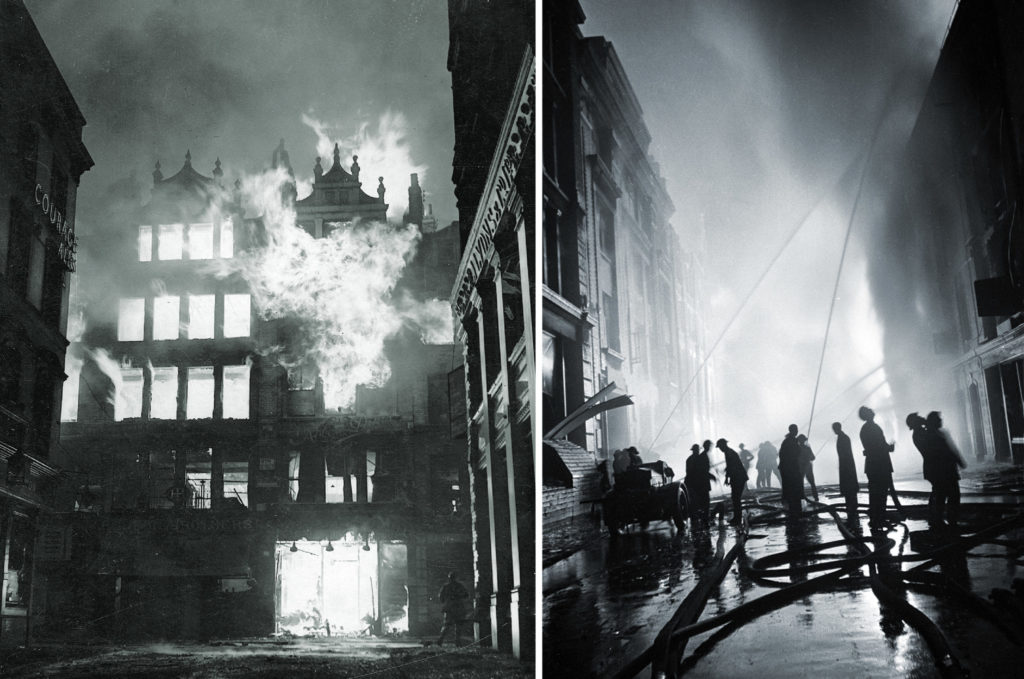
It was hardly surprising that a lot of American troops, thousands of miles from home in a world gone mad, indulged their passions. But for one, it went much further. Karl Hultén was a private in the 501st Parachute Infantry Regiment, 101st Airborne Division, stationed in Reading, west of London. In July 1944, aged 22, he went AWOL, joining other deserters in using the anonymity of the big city to hide from the military police. Without the correct papers at a time when you needed a ration book to buy food, these men had to break the law to survive—police estimated a tenth of London’s crime was the work of deserters from the various Allied forces based in Britain. Arrested and re-turned to his unit, Hultén stole a U.S. Army truck and fled again, this time buying himself a second lieutenant’s uniform as a disguise. For several months he lived a counterfeit life, sneaking into cinemas, eating in cheap cafes, sleeping in the back of the truck, and trying to get by without getting picked up.
Then he met Elizabeth Jones, a troubled 18-year-old from Wales. She was already married, to a soldier who had disappeared to the war a year earlier. She moved to London in search of excitement and found work as a stripper. As she sat in cinemas watching gangster movies, she dreamed of life as a moll in Chicago. An encounter with this young American was a dream come true.
Both Jones and Hultén seem to have been fantasists. Both were using fake names when they met in October 1944. He told her that he was working for the mob and showed her the automatic pistol he was carrying. Over the next six days they egged each other on into a crime spree that culminated in the shooting of a taxi driver. Both were arrested and sentenced to death. Hultén was hanged on March 8, 1945, in Pentonville Prison. The government, uneasy about hanging a teenage girl, commuted Jones’s sentence to a jail term, over protests from many members of the public who saw her as equally guilty.
Unusually, the U.S. authorities waived the Visiting Forces Act and allowed Hultén to be tried in a British court so his case could be heard alongside Jones’s. For the most part, American soldiers faced American justice in makeshift courts with the Stars and Stripes pinned to the wall. These courts heard a full range of cases, including ones related to another booming area of British crime: the black market.
By the time American troops arrived in Britain, most of the things regarded as essential to everyday life were being rationed: meat, butter, oils, eggs, milk, sugar, canned goods, gasoline, tires, clothing, paper, and even soap. To get any of these in a shop, you needed both money and a ration book, which showed whether you’d already had your allocation. On top of that, there were shortages. If word spread that a consignment of some coveted foodstuff had arrived at a shop, a queue would immediately form.
With everything in short supply, it was hardly surprising that the British people began to cut corners or seek extra profits. Farmers could sell their eggs legally, but they got more if they sent them to the black market. Shopkeepers who came into a little extra stock would reserve it for customers whom they knew would pay extra for it. If there were a spare supply of something—not everyone took their entire cheese ration, for instance—a shopkeeper could keep it under the counter and sell it on the sly to favored customers. Such private enterprise was now a crime, but how much of it took place remains unknowable. Both parties to the transaction were happy, and neither had any interest in reporting it. But the government felt otherwise and assigned nearly 900 inspectors to ensure that citizens followed regulations.
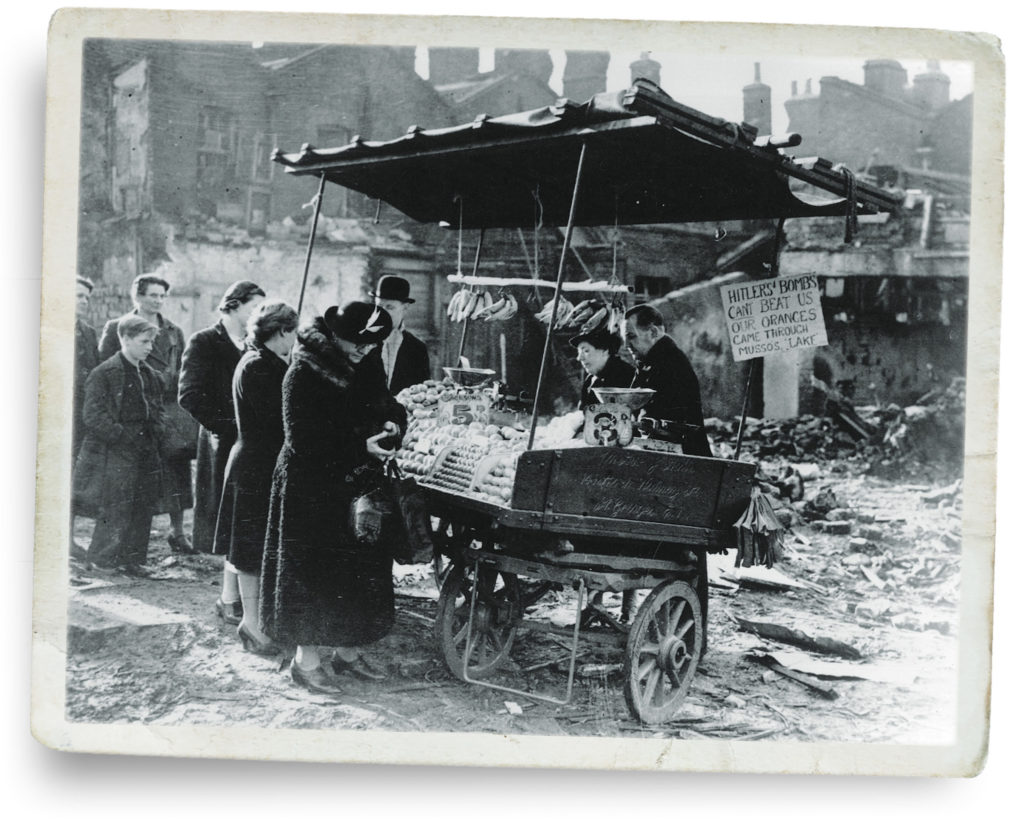
Churchill was well aware of the danger of turning ordinary citizens into criminals. In 1942, newspapers reported on people who gave rations to neighbors, which was illegal. But it was perfectly natural to swap rations with friends, or to contribute to a neighbor’s birthday cake. The prime minister urged his staff not to “enforce vexatious regulations.”
Rations were enforced by a complex system of coupon books and the bureaucracy created temptations to fraud. At first, shopkeepers were supposed to collect all the ration coupons they gathered and submit them to the government, receiving vouchers in exchange that could be used to claim more goods. But many realized that no one checked the envelopes that arrived in government offices full of tiny pieces of paper, and simply sent in scraps, using the vouchers they got back themselves or selling them on.
Ordinary citizens quickly realized that the ration books themselves had value. If you could afford more than your ration allowed, you might be tempted to try to get your hands on another ration book. An obvious strategy was to claim yours had been lost, or destroyed in a bombing raid. Or you could buy one from someone who either couldn’t afford to use theirs—this was especially common with clothing rations—or who had got hold of spares by underhand means. In the first year of clothes rationing, 800,000 people claimed to have lost their books. Burglars targeted the books when they robbed houses, and staff working at printers or in the postal system had opportunities to filch them.
Criminal gangs got into the act. Organized crime had fallen in the early months of the war, which one senior police officer attributed to the disappearance of a lot of young offenders into the armed forces. But war created opportunities, and professional thieves began organizing heists of places where they knew ration books were stored. At one point, a ration book would sell for £5, close to a week’s wages for many people. But in a sign of how many were stolen, that price would later fall to £1.
Theft was only one option. Underground printers, who before the war had been producing pornography, found that forged clothing coupons sold even better. In 1942 a sophisticated nationwide counterfeiting ring stood trial, but most forgeries proved untraceable.
While people at the bottom were gaming the system, those at the top of British society did their bit to keep illicit businesses thriving. They were the ones, after all, who had the money to benefit from the black market. Wiltons restaurant in central London celebrated its 200th anniversary in 1942. Its proprietor, asked the secret of his excellent wartime mayonnaise, replied with nonchalance: “Quite simply, fresh eggs and olive oil.” It would not have done to ask how he obtained these.
The black market may have become accepted as a fact of wartime life, but one crime was regarded as unspeakably wicked: looting. People returning to their homes after bombing raids often found their valuables had been grabbed while they were hiding underground. In 1940, the first year of the Blitz, London reported more than 4,500 cases of looting. There was a similar pattern in every other city that was hit. Air raid wardens learned to post guards at houses and shops that had been damaged in raids, to protect them from follow-up raids by their fellow Britons. But those doing the guarding weren’t above helping themselves to valuables they found in the streets. In 1941 the government tried more than 30 members of the Royal Engineers for stealing valuable lead from the roofs of houses they’d been sent to demolish. And not every bombing victim was genuine. One London man claimed government compensation for having been “bombed out” 19 times over the course of five months.
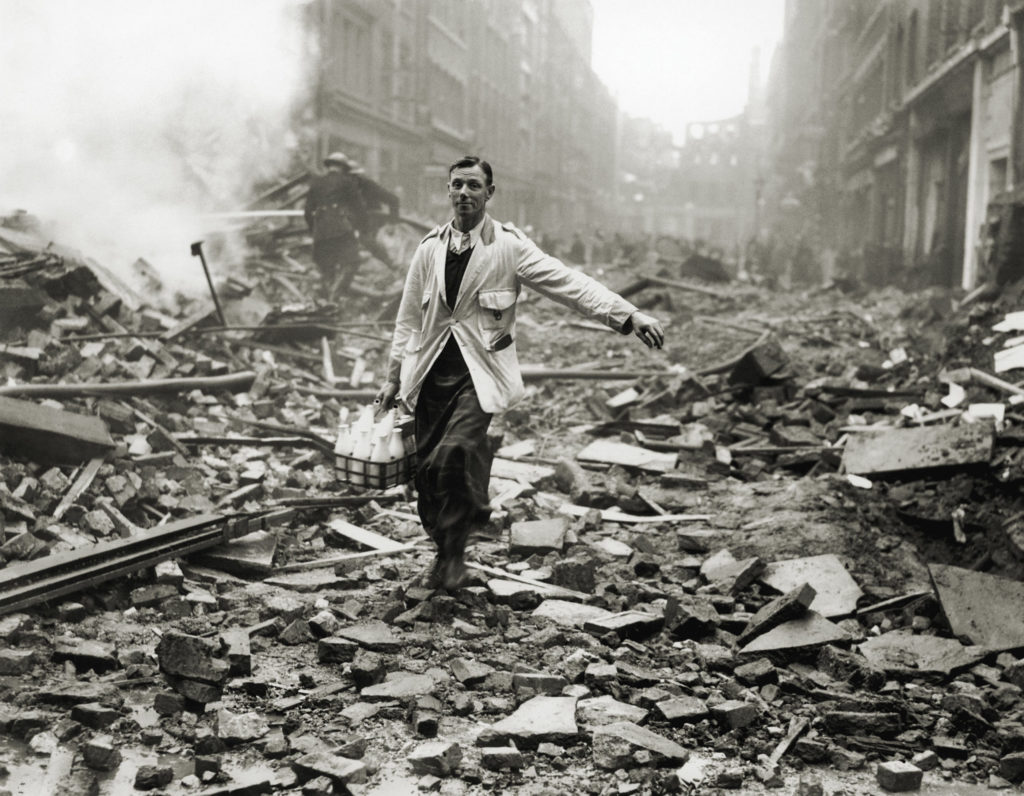
Organized criminals made enthusiastic use of the chaos of bombing. With explosions all around, who was going to notice the noise of a safe being blown? In the darkness of the blackout, who could tell whether a getaway van disguised as an ambulance was genuine? Who had the time to check? Professional burglars likewise didn’t bother picking through rubble, preferring to identify large houses they knew were unoccupied during raids, and then clearing them of valuables.
Or why bother with houses at all, when there were warehouses full of goods whose value had ballooned due to rationing? It wasn’t just food. Nylon stockings, sanitary napkins, toys, and soap were all suddenly worth a burglary for people who knew how to use a crowbar.
Another crime that remained socially unacceptable was trying to dodge the draft. Those who wanted to avoid conscription could find a corrupt doctor who would provide a medical certificate, or pay someone with a condition to impersonate them at a physical examination. One man with a bad leg charged £150 for the service, and another with a heart condition set his fee at £200. Dodgy officials could be bribed to provide a certificate that a man was in a “reserved occupation” and exempt from service.
The British people’s attitude to this when peace came was complicated. Decades after the war ended, people still told stories about returning soldiers who made it clear to men who had dodged service that they should leave town. But the long-running and much-loved sitcom of wartime life, Dad’s Army, first broadcast in 1968, featured as one of its main characters a black marketeer who, despite being obviously fit, had avoided conscription because he was allergic to corned beef. Arguably the show’s most popular character was a butcher who would hand parcels of illicit sausages to the town’s apparently upright bank manager. For all the stories of Blitz spirit and solidarity, there were few people for whom the war didn’t involve compromises.

